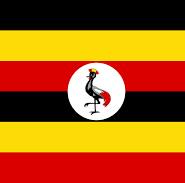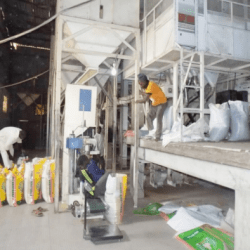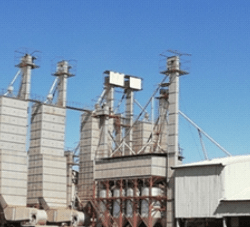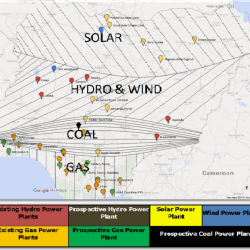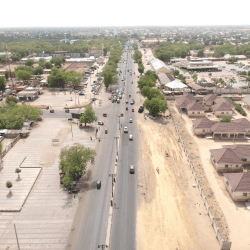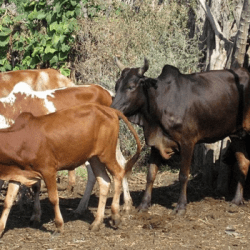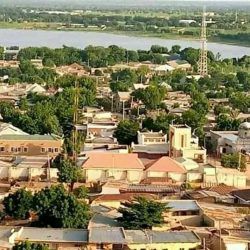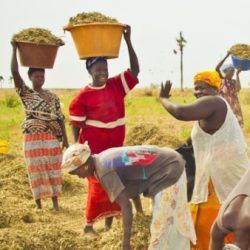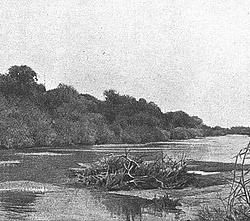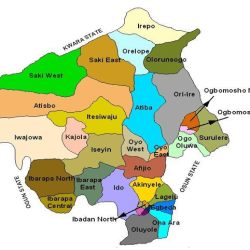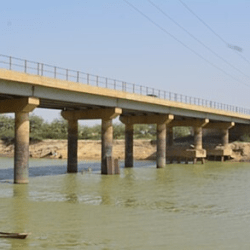Chad is often described as one of the poorest countries in the world. For long, its economy has been dominated by agro-pastoral activities, which employ nearly 80% of the working population. The main cash crops are cotton, gum arabic and groundnuts. However, this sector has a huge weakness since agriculture remains weakly mechanized and in 1993 contributed only 48% to GDP (EDST 1996-1997).
The secondary sector contributes only 14% to GDP due to low levels of activity in this sector. The tertiary sector, in turn, contributes 38% to GDP, but remains highly diversified and includes both so-called informal and formal activities, i.e. those emanating from the organised economy. The level of GNP increased from $190 per capita in 1993 (UNDP, 1994) to $1060 per capita in 2003 (INED, 2003).
Chad has the potential for its economic development:
- agro-pastoral potential,
- mining
- handcrafted and
- human.
These potentialities, which in principle should serve as a key linchpin for sustained economic growth, face a number of problems. These include the endless wars, the lack of a coastline, the encroachment of the desert, the inadequacy of adequate socio-economic and health infrastructure, the mismatch between training and employment, the deterioration of the terms of trade, etc.
Like most African countries south of the Sahara, Chad has been affected by economic crisis and especially political instability, which have not really fostered economic performance capable of propelling the country forward.
Chad is one of the oil-producing countries. Since July 15, 2003, oil begun to gush out. The country’s debt is about 3.7 billion dollars, financed by the World Bank as part of a sustainable development program.
The exploitation of oil opens new prospects for the Chadian economy, which has remained weak for a long time. This is a considerable income for this country, ranked by the United Nations 165th out of 175 countries on the Human Development Index (HDI) in 2004.
At $64 million per year, oil revenues will double the government’s current revenues.
Republic of Chad
The Republic of Chad is a country in Africa. The landlocked country is bordered by Libya to the north, Sudan to the east, the Central African Republic to the south, Cameroon to the southwest, Nigeria to the southwest (at Lake Chad), and Niger to the west.







Chad has a population of 16 million and 1.6 million live in the capital and largest city of N’Djamena.
With a total area of about 1,284,000 km2 (496,000 sq mi), Chad is the 5 largest country in Africa and the 20 largest in the world by area.
Capital: N’Djamena
Independence day: August 11, 1960
Calling code: +235
Currency: CFA franc (XAF)
Official language: French, Arabic
Area: 1,284,000 km2


It is home to over 200 different ethnic and linguistic groups.
Islam (55.1%) and Christianity (41.1%) are the main religions practiced in Chad.
Chad is largely a semi-desert country. It is rich in gold, uranium and petroleum.
It became an oil-producing nation in 2003, with the completion of a $4bn pipeline linking its oilfields to terminals.
Despite its abundant resources, Chad is still faced with poverty and food insecurity. Close to half of the population (47%) lives below the poverty line.
The country ranks the 2nd lowest in the Human Development Index, with 0.394 in 2021 placed 190th, and is one of the poorest and most corrupt countries in the world.
Most of its inhabitants live in poverty as subsistence herders and farmers.
Since 2003 crude oil has become the country’s primary source of export earnings, superseding the traditional cotton industry. Chad has a poor human rights record, with frequent abuses such as arbitrary imprisonment, extrajudicial killings, and limits on civil liberties by both security forces and armed militias.
Chad’s post-independence history has been marked by instability and violence, mostly from tension between the mainly Arab-Muslim north and the predominantly Christian south.
However, it suffers from inadequate infrastructure, and internal conflict with rebels in the north, exacerbated by a jihadist insurgency across the Sahel region and Lake Chad Basin.
Regions
Chad has 23 regions, Departments and Sub-prefectures.
The subdivision of regions came as part of the decentralization process when the government abolished the previous 14 prefectures.
The regions of Chad are:
- Bahr el Gazel
- Batha
- Borkou
- Chari-Baguirmi
- Ennedi-Est
- Ennedi-Ouest
- Guéra
- Hadjer-Lamis
- Kanem
- Lac
- Logone Occidental
- Logone Oriental
- Mandoul
- Mayo-Kebbi Est
- Mayo-Kebbi Ouest
- Moyen-Chari
- N’Djamena (capital)
- Ouaddaï
- Salamat
- Sila
- Tandjilé
- Tibesti
- Wadi Fira
Ethnic groups
Chad has more than 200 distinct ethnic groups. In the south live sedentary people such as the Sara, the nation’s main ethnic group, whose essential social unit is the lineage. In the Sahel sedentary peoples live side by side with nomadic ones, such as the Arabs, the country’s second major ethnic group. The north is inhabited by nomads, mostly Toubous.
The ethnic composition of Chad, based on 2009 Census, is as follows:
- 26.6% Sara
- 12.9% Arab
- 8.5% Kanembu
- 7.2% Masalit
- 6.9% Toubou
- 4.8% Masa
- 3.7% Bidiyo
- 3.7% Bulala
- 3.0% Maba
- 2.6% Daju
- 2.5% Mundang
- 2.4% Gabri
- 2.4% Zaghawa
- 2.1% Fula
- 2.0% Tupuri
- 1.6% Tama
- 1.4% Karo
- 1.3% Bagirmi
- 1.0% Masmaje
- 2.6% other Chadian
- 0.7% foreign
